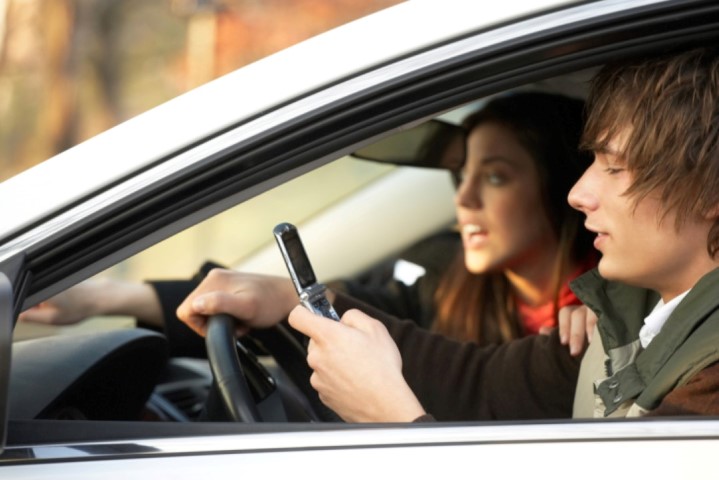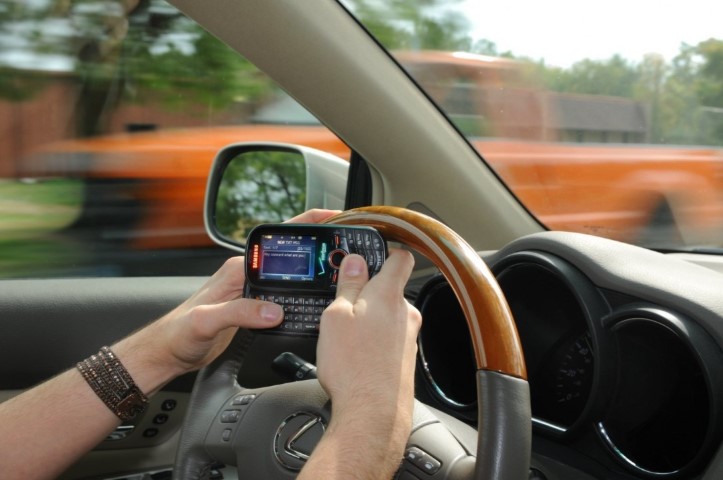Is Distracted Driving More Dangerous Than Drunk Driving?
- Written by
- Published in News
- font size decrease font size increase font size
- Be the first to comment!

A well established fact is that drunk driving has significant consequences for property damage, and more importantly for permanent injuries, loss of life, long-term healthcare issues and additional medical expenses. A number of societal resources and organizations exist for the sole purpose of reducing the number of drunk drivers on the road and drunk driving fatality rates. Now, with the widespread use of smartphones, a new type of driving hazard has arisen, leading people to ask the question: Is distracted driving more dangerous than drunk driving?
Drivers in the United States spend an average of 25.5 minutes daily commuting to and from work, and there is a great temptation to make time on the road productive. Distracted driving is not a new concept. For many years, people have engaged in risky behaviours while driving including applying make-up, shaving, eating, drinking, and lighting cigarettes.
However, during the past 10 years, a number of new distracted driving behaviours have emerged including:
•Talking on phones
•Texting on phones
•Reading books, newspapers, or other written content on smartphones or tablets
•Accessing the controls for iPods and other MP3 devices
•Using laptops or netbook computers
•Playing hand-held games
•Using GPS devices
These distracting behaviours are serious enough on their own to lead many people to answer “yes” to the question: Is distracted driving more dangerous than drunk driving? However, all of these behaviours become exponentially more dangerous during certain driving conditions including poor weather. Drivers need to be aware of current road conditions and the behaviour of the other drivers on the road at all times. Maintaining complete attention is imperative in order to be prepared for sudden stops and starts, any unusual actions by other drivers and dangerous road conditions.

Over 340 people die annually in the United States as a result of car accidents due to icy road conditions. This number is insignificant in comparison to the more than 440,000 injuries and 5,400 deaths that occur in the United States each year as a result of distracted driving.
Distracted driving is a particular issue among teenage drivers. Consider the following statistics:
•75% of all teenagers ages 12 to 17 in the United States have their own cell phones.
•66% of these teenagers use their phones to send or receive text messages.
•Older teenagers are more likely than their younger counterparts to use text messaging; 82% of teenagers ages 16 and 17 use cell phones and 76% of them text almost exclusively.
•Just over half of the teenagers who have their own cell phones have talked on the phone while driving, or about 43% of all teenagers ages 16 and 17 in the United States.
•One in three teenagers ages 16 and 17 who text frequently do so while driving, which translates to 26% of all teenagers ages 16 and 17 in the United States.
A number of research studies clearly illustrate the significant dangers of texting while driving. One of the most serious dangers is that texting substantially delays a driver's reaction time. Individuals who text while driving on dry, clear roads have a reaction time that is almost one second longer than individuals who do not text. It’s interesting to note that individuals with a 0.08% blood alcohol level have a reaction time that is twice as fast as texting drivers when the driving conditions are the same.
Best practice is to pull off on the side of the road or wait until arriving at a destination to pull out a phone and text. Texting while driving is never worth the potential risks that a driver and the other drivers on the road will face.
About the author:
Doug Climenhaga is president of SVI International, Inc., a leading supplier of parts for industrial lift equipment, including brake lathe parts. With more than 20 years experience in the hydraulic and automotive lift industries, he holds two patents and has designed scores of problem-solving products.

